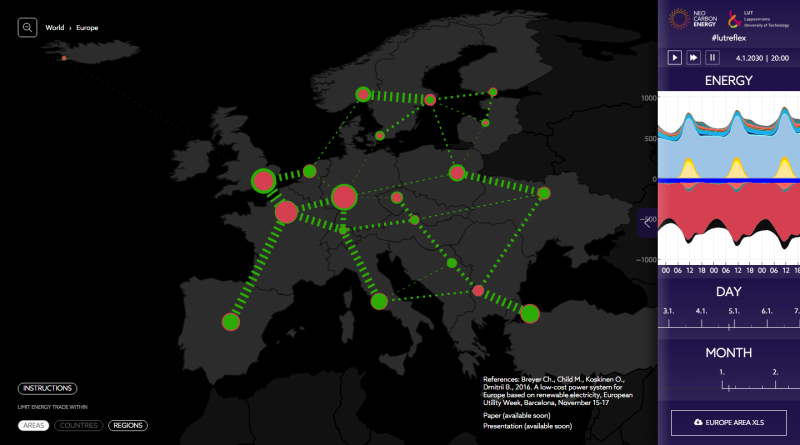Iran and Middle East could adopt fully renewable electricity systems

Iran can transition to a fully renewable electricity system and financially benefit from it by 2030. Researchers at Lappeenranta University of Technology (LUT) show that major oil-producing countries in the Middle East and North Africa (MENA) region could turn their abundant renewable energy resources into lucrative business opportunities in less than two decades.
According to the study, a fully renewable electricity system (100% RE) is roughly 50-60 percent cheaper than other emission-free energy options for the MENA region. For example, new nuclear power costs around 110 euros per megawatt hour. Fossil-CCS option costs around 120 euros per megawatt hour. But the cost of the fully renewable energy electricity is around 60-40 euros per megawatt hour, based on financial and technical assumptions of the year 2030.
The cost of wind and solar electricity would reduce further to 37-55 euros per megawatt hour if different energy resources were connected with a super grid that allows the transmission of high volumes of electricity across longer distances. For Iran, the price could go as low as 40-45 euros per megawatt hour. Such low cost show that the transition of the current fossil-based electricity system towards a fully renewable electricity system can cover all electricity needs in the decades to come.
"The low cost renewable electricity system is a driver for growing standards of living, continued economic growth, in particular also for energy intensive products, and finally more peace," emphasizes Professor Christian Breyer.
Transforming the electricity system fully to renewables for Iran requires 49 gigawatts of solar photovoltaics, 77 gigawatts of wind power and 21 gigawatts of hydropower. Most of the hydropower already exists, but the solar and wind capacities would require new investments. Wind power can be installed in many parts of the country and solar systems in all parts of Iran for an attractive cost. Both technologies can be easily added to the existing energy infrastructure, which is mainly based on flexible fossil natural gas fired power plants plus hydropower.
The scientists also prepared a renewable oil refining scenario in which fossil fuels are replaced by synthetically produced from carbon dioxide, water and electricity. With this so called power-to-fuel technology, 100% renewable system can still use carbon fuels and chemicals for aviation, materials and medicine. These are the most difficult sectors to decarbonise because batteries are too heavy for powering airplanes and carbon atom is needed in plastics and various chemicals such as solvents and medicine.
"The picture that emerges from that study is that the fossil fuel industry can transform its business to meet the COP21 target of a net zero emission energy system. This requires fundamental change in how we think carbon, but it could potentially open major new business opportunities," says Breyer.
More information: The MENA super grid towards 100 renewable energy power supply by 2030: bit.ly/2m1DINs
The Role of a 100% Renewable Energy System for the Future of Iran: Integrating Solar PV, Wind Energy, Hydropower and Storage: bit.ly/2lGu87c
Renewable Energy-based Synthetic Fuels Export Options for Iran in a Net Zero Emissions World: bit.ly/2m5aXjQ
Provided by Lappeenranta University of Technology



















